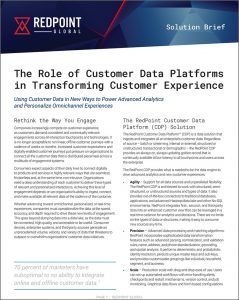 The New England Journal of Medicine recently published results from a study of an incentive-based payment model which looked at changes in spending, utilization, and quality of healthcare for hundreds of thousands of enrollees of a BCBS Massachusetts program. Over the course of eight years, payers in the program paid 11.7 percent less in claims for this cohort versus spending for a control group.
The New England Journal of Medicine recently published results from a study of an incentive-based payment model which looked at changes in spending, utilization, and quality of healthcare for hundreds of thousands of enrollees of a BCBS Massachusetts program. Over the course of eight years, payers in the program paid 11.7 percent less in claims for this cohort versus spending for a control group.
The study by Harvard Medical School researchers attributed the savings to several factors, including lower utilization of services such as lab testing, imaging, and emergency department visits. The study’s authors concluded that the payment model – also known as a value-based care model – was “associated with slower growth in medical spending on claims, resulting in savings that over time began to exceed incentive payments.”
Most quality measures also improved for the cohort in this program, in the form of improved processes and outcomes. These quality measures are key to the continued health of a population and directly affect the incentive payments that are the backbone of the growing VBC model (vs. a traditional fee-for-service basis). When savings begin to exceed the incentive payments, as they did in the study, there is an even greater financial incentive for healthcare professionals to adopt a VBC model.
Implementing a scalable VBC model to yield better outcomes while reducing costs requires having the right technology platform in place. Healthcare professionals, who have traditionally been faced with siloed claims and clinical data, need a single view of the healthcare consumer that provides them with data from every touchpoint and interaction of a consumer’s complete healthcare journey.
Value-Based Care Starts with Personalization
Last year, Redpoint partnered with Lucerna Health to advance the market’s transformation to VBC through personalized engagements with the healthcare consumer. A single view is the foundational requirement for delivering personalized engagements that are in the context and cadence of an individual healthcare consumer’s journey. With every available data point about the consumer – ranging from clinical, claims, behavior to demographic data – compiled into a golden record, they have the deep understanding of each consumer required to drive the model. Combined with in-line analytics to determine next-best actions and an intelligent orchestration layer to consistently deliver messages in any channel or moment of engagement, healthcare organizations have a single point of control with which to guide an individual journey.
In practice, this leads to lower costs, better patient engagement and satisfaction, and better outcomes because consumers are presented with information and recommended actions that are the most relevant to them as individuals. Inefficiencies that result from siloed data and an unintegrated system of various providers (primary care, lab, pharmacy, specialists, etc.) are eliminated, which greatly help the consumer navigate through the healthcare system.
Doctor, Heal Thyself
Lucerna Health is itself a successful case in point. Using the Redpoint Customer Data Platform for a single point of control over data, decisions, and interactions, Lucerna Health advances a VBC approach by nurturing alliances between healthcare payers and providers, and ultimately reducing inefficiency and complexity.
One way it reduces inefficiency is through advanced coordination of care and services. When an individual signs up for a health plan, the new member needs to be matched with a primary care provider. Possessed with a single view, Lucerna Health matches members with providers and specialists in their area who speak the same language. By knowing everything there is to know about the consumer – and providers – Lucerna guides members to healthcare centers that have the right equipment, staffing, and services to meet the specific needs of a consumer. A single point of control also allows for advanced operational sensitivity. With real-time updates of a healthcare center’s waiting time, for instance, a healthcare consumer can be guided to a facility with the shortest wait time. Personalized engagements extend to notifying members where to find the least expensive screening or CT scan, and other coordination of care efforts. It also means communicating in the consumer’s preferred channel, sending hyper-relevant messages and reminders, and limiting the number of interactions a consumer must take to access care or services such as scheduling or billing.
Profitable Growth through Value-Based Care
Results are in line with those of the Harvard Medical School research, with the VBC model enacted by Lucerna Health using the Redpoint platform achieving significant gains. The platform has helped one client provider expand from one healthcare center serving roughly 6,000 patients to 30 clinics serving approximately 200,000 patients in just five years. Another client, a payer, needed to match thousands of patients who needed an accurate risk assessment with providers. Because data was centralized with a single point of control, the payer knew that some patients had already scheduled appointments and scrubbed 23 percent of the names from the campaign – a significant cost savings. To test the effectiveness of personalization, one subset of the remaining patients received personalized outreaches (emails, direct mailings, and a postcard) and one received static messages. The group which received personalized engagements scheduled 50 percent more appointments.
The growing trend toward VBC received a major boost from the Centers for Medicare and Medicaid (CMS) this year. The CMS Primary Care Initiative, announced in April and set to begin in January, intends to “transform primary care to deliver better value for patients”, reduce administrative burdens and “empower primary care providers to spend more time caring for patients” by implementing five payment model options that are all based on paying for health and outcomes rather than procedures.
By lowering costs, improving outcomes, and improving patient satisfaction, the VBC model addresses many of the underlying reasons for the cost and complexities that plague the healthcare system today. I recently wrote a blog in this space with some cross-industry predictions for 2020. Within healthcare, the growing popularity of VBC is a near-certainty for 2020 and beyond. Rest assured, by the end of the next decade incentive-based payment models like the CMS Primary Care Initiative will lead to a significant increase over the 34 percent of healthcare payments that are currently tied to value-based care.
RELATED CONTENT
In a Heartbeat: The True Value of a CDP’s Real-Time Capabilities
Take a Data-Driven Approach to a Consumer’s Healthcare Journey
The Role of Personalization in Value-Based Care

